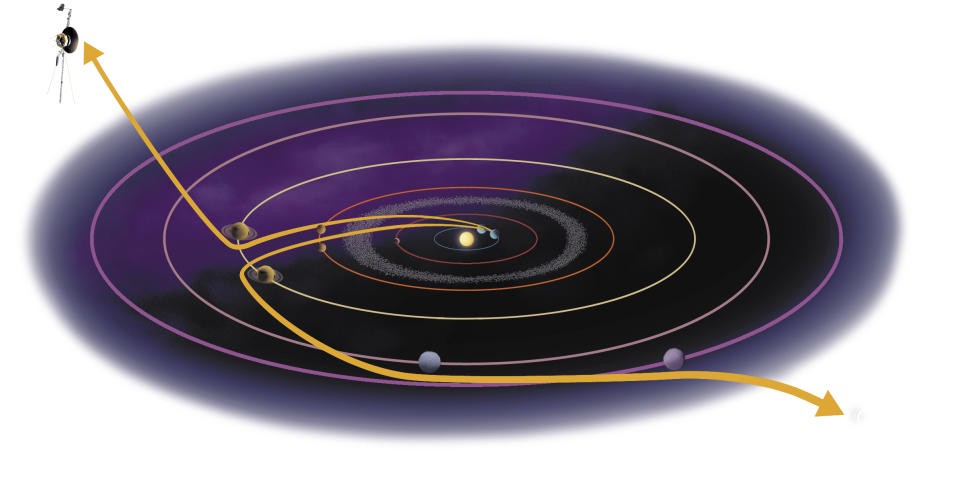Voyager 2 probe reaches interstellar space 42 years after its launch

A probe that blasted off from Earth on August 20, 1977 has become the second man-made object to leave the Solar System.
The Voyager 2 probe has sent back signals from the edge of our solar system, which scientists say prove that it has entered interstellar space.
The probe blasted off from Earth 16 days before its twin spacecraft, Voyager 1 - but entered the interstellar medium six years after Voyager 1 due to its slower trajectory.
It crossed the outer edge of the Sun's protective bubble, known as the heliopause, on November 5, 2018.
READ MORE
Voyager, the Solar System and beyond
Mysterious ‘gravity waves’ seen rippling in our atmosphere
In a series of papers published in the journal Nature Astronomy, researchers confirmed the spacecraft's journey into the "space between the stars" by noting a "definitive jump" in the density of the plasma - made up of charged particles and gas - in interstellar space.
According to the scientists, this jump was detected by one of the instruments on Voyager 2 and is evidence of the probe making its way "from the hot, lower-density plasma characteristic of the solar wind to the cool, higher-density plasma of interstellar space".

It is also similar to the plasma density jump experienced by Voyager 1 when it crossed into interstellar space, the researchers added.
Among many things, the astronomers are looking to gain a better understanding of how the solar winds - the stream of charge particles coming out of the Sun - interact with the interstellar winds - made up of particles from other stars.
Dr Edward Stone, a professor of physics at the California Institute of Technology and former director of the Nasa Jet Propulsion Laboratory, said: "We are trying to understand the nature of the boundary where these two winds collide."
The astronomers believe the probes' journeys - with their different mission goals and trajectories - give "valuable clues" about the structure of the heliosphere, a vast bubble encompassing the Sun and the Solar System.
Bill Kurth, a research scientist at the University of Iowa and one of the authors of the studies, said: "It implies that the heliosphere is symmetric, at least at the two points where the Voyager spacecraft crossed."
In one of the papers, the researchers suggest that the interstellar medium near the heliopause is hotter than expected, with a temperature of around 30,000-50,000K (29,000-49,000C).
In another study, a different team reported the presence of layers "on both sides of the heliopause".
While scientists were aware of the inner layer, the presence of the outer layer became evident only after Voyager 2 crossed into interstellar space.

 Yahoo News
Yahoo News 

